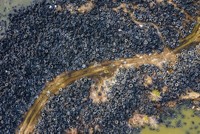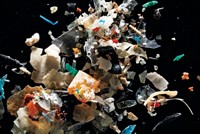Advertisement
Grab your lab coat. Let's get started
Welcome!
Welcome!
Create an account below to get 6 C&EN articles per month, receive newsletters and more - all free.
It seems this is your first time logging in online. Please enter the following information to continue.
As an ACS member you automatically get access to this site. All we need is few more details to create your reading experience.
Not you? Sign in with a different account.
Not you? Sign in with a different account.
ERROR 1
ERROR 1
ERROR 2
ERROR 2
ERROR 2
ERROR 2
ERROR 2
Password and Confirm password must match.
If you have an ACS member number, please enter it here so we can link this account to your membership. (optional)
ERROR 2
ACS values your privacy. By submitting your information, you are gaining access to C&EN and subscribing to our weekly newsletter. We use the information you provide to make your reading experience better, and we will never sell your data to third party members.
Environment
Nanotube Synthesis Emits Toxic By-Products
Evaluating small-scale processes could shed light on potential large-scale environmental issues
by Rachel Petkewich
August 23, 2007

The carbon nanotube industry is growing, but little is known about the by-products discharged during nanotube manufacturing. Researchers at Woods Hole Oceanographic Institution (WHOI) and MIT have now analyzed the effluent stream from a representative, small-scale synthesis of multiwalled nanotubes and detected volatile organic compounds and at least 15 polyaromatic hydrocarbons (PAHs), including compounds known to contribute to ozone formation and respiratory problems.
Desir??e L. Plata, a graduate student in a joint program of WHOI and MIT, presented these results in a poster session organized by the Division of Environmental Chemistry at this week's ACS national meeting in Boston.
"This work is a step in the right direction," said Mark R. Wiesner, a professor of civil and environmental engineering at Duke University, who has studied nanotubes. "The waste streams associated with the production of nanomaterials, as well as the risks associated with exposure and handling of non-nano feedstocks and wastes, need to be considered when evaluating the environmental footprint of these materials."
Most studies of nanotube toxicity have focused on the potential effects of the ingredients or finished products in organisms and the environment. Examining the by-products and waste streams of these synthetic processes before the materials are mass-produced may help nanotube manufacturers tailor their processes to prevent potential environmental problems in the future, Plata said.
Nanotubes can be made in many ways. For their study, Plata and her colleagues used ethylene as the carbon feedstock, pumping it into a high-temperature quartz reactor containing a metal catalyst. In forming 1 mg of nanotubes, the researchers collected from the reactor's effluent approximately 0.6 mg of PAHs, including naphthalene, benzo[b]fluoranthene, and benzo[a]pyrene.
Plata said optimizing syntheses or adding inexpensive filters to trap PAHs in the waste stream may be the solution. The researchers, including Plata's graduate advisers, Christopher M. Reddy at WHOI and Philip M. Gschwend at MIT, have agreements with four companies to test effluent streams from their syntheses. "We can expect to have similar products coming out the exhaust pipe, but the quantity of those products at a larger scale is where the uncertainty lies now," Plata noted.????





Join the conversation
Contact the reporter
Submit a Letter to the Editor for publication
Engage with us on Twitter